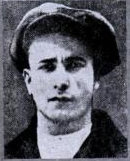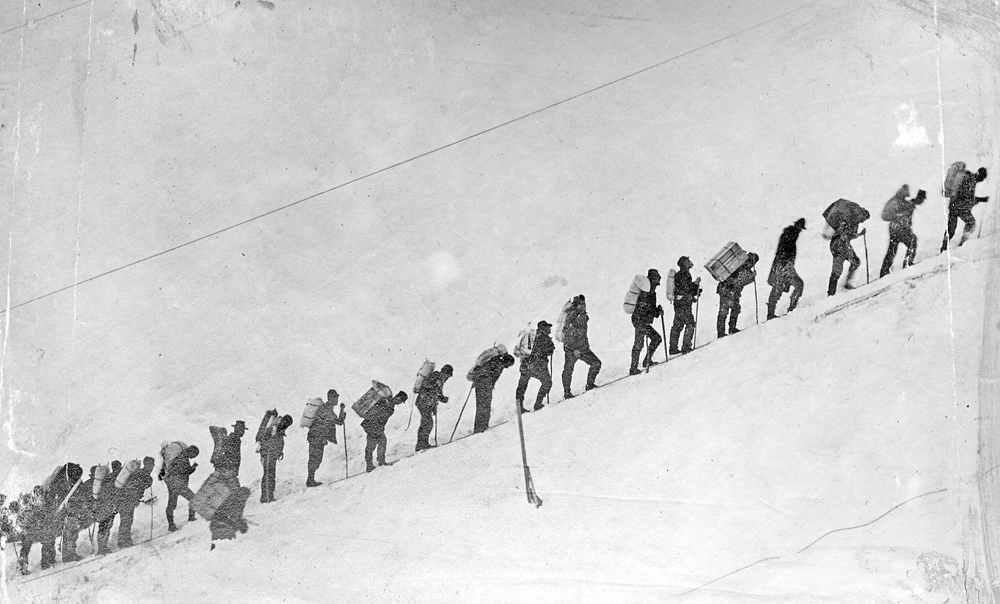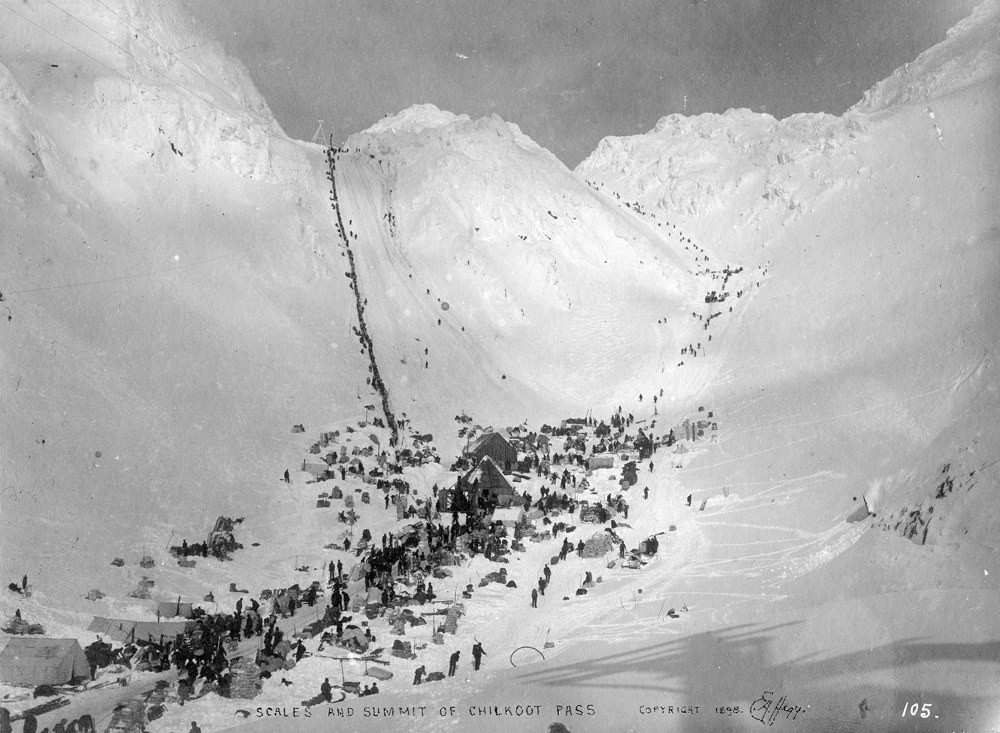The February 12, 1949 edition of the Stamford (CT) Advocate carried nine headlines above the front page fold. Illustrating the importance of local newspapers and their breadth of coverage in that era, five of the stories were international (mostly related to the new Cold War), two concerned events in Washington DC, and one reported on 4,000 people marooned by heavy snow in Idaho and California. The only local story, accompanied by a photo, was headlined "
Grocer Says Union Tactics Force Closing Of Business". The grocer was my maternal grandfather, Nathan Cohen (I've written previously of my paternal grandfather,
RMS Republic and Our Grandfather Louis, and maternal great grandfather,
Our History and My History).
When I was growing up in Norwalk, Connecticut in the 1950s and 60s, my grandfather owned a toy store in nearby Stamford. I remember the distinctive aroma of wooden floors and shelves as you walked in. The decor was minimalistic, even by the standards of the time. There was a soda machine in the front that dispensed glass bottles. As a treat, my grandfather would occasionally take me on his Sunday trips to the Bronx to visit toy wholesalers. Grandpa was tough, direct, interesting, and smart. I thought the world of him.
It must have been sometime in the mid or late 60s that I learned from my mother how Nate came to be running a toy store, and why he had no employees.
Born in 1898 on the Lower East Side of Manhattan to Russian Jewish immigrant parents, Nate Cohen (sometimes called Nat) moved to Stamford by the early 1920s. For years he carefully saved his money while working as a butcher for a wholesaler, and preparing to strike out on his own.
In 1935 he opened a credit and delivery store at 907 Main Street in downtown Stamford, converting it to Cohen's Self-Service Market six years later, one of the first self service markets in that part of the state. Self-service markets were a relatively new development. In a traditional store, the shopper went to a counter and told a clerk what they wanted. The clerk would then bring the requested goods to you. In a self serve store, the shopper walked the store and brought the items they selected to the clerk (the first patent for a Self Serving Store (US 1,242,872) was issued on October 9, 1917 to Clarence Saunders of Memphis, Tennessee. Saunders went on to open a chain of stores which he named Piggly Wiggly).
Nate's store was successful enough to support his wife and young daughter (my mom). They were never wealthy; he and my grandmother lived in a one-bedroom, three room apartment when I was growing up, but Nate took great pride in the business he'd built. And, as the business grew, he added three or four employees.
Local 1507 of the Retail Clerk's International Association approached him in 1938, asking that he allow his employees to join the union. Nate "
had no objection . . . because I felt that the labor union movement generally was a good thing for this country" and asked his employees if they wanted to join. They did, and he signed a one-year contract. Each year he asked his employees and, with their consent, signed annual contracts until 1949. Throughout, he always paid his employees higher than the union scale.
In the intervening years, Stamford grew rapidly, its population increasing from 49,000 in 1940 to 74,000 by 1950, as part of the great post-war suburban boom that saw Connecticut's population soar by more than 75% from 1940 to 1970. The city was enjoying prosperous times.
When it came time for the annual renewal at the end of 1948, three of Nate's employees told him they didn't see the need for the union, so he declined to enter into another contract. In response he was warned to sign "
or else". He chose "
or else". Grandpa didn't like being threatened and he stuck by his decisions once he made them.
On February 1, 1949 the union called a strike but only grandpa's newest employee, hired three months before as a favor to a family in the neighborhood, walked out, starting a one-man picket line. But that wasn't the problem; it was the other union tactics.
Nate told the Advocate:
. . . truck drivers who have tried to make deliveries have been threatened and intimidated to such an extent that they not only are afraid to bring supplies to my store, but are even afraid to leave such supplies some place else where I could go and pick them up myself.
My mother told me what her father did not tell the Advocate; one of the drivers had been badly beaten by union thugs.
Nate added that he had tried to get supplies from other retailers but they were warned to stop helping him "
or else". He also reported to the police that men were watching his house and trailing him where ever he went during the day. Within 10 days business dropped by 40% as he ran out of supplies on his shelves.
According to my mother, the beating of the driver greatly upset my grandfather and he decided he could not put other drivers or his employees in danger. He decided to close the store, announcing it in an open-letter that took up 1/3 of an inside page of the Advocate and published the same day as the story. He also told the Advocate "
that a small neighborhood grocery story cannot now carry on under union domination". When asked about his future plans, Nate told the paper, "
I don't know what I'm going to do now. All I know is that I can't continue this way".
The full text of his eloquent letter can be found below, but here are the closing paragraphs.
What would you do? I am a little man trying to earn a living. The men with me are loyal to me. All we want is to keep going and make enough to provide for our families. I have no money to go on fighting for a principle. I guess I am just like a million other shop-keepers, who if they found themselves some day caught in a bewildering situation like mine would do just what I am forced to do now, shut up shop.
It is hard to give up what you have built up over many years, but I must do just that, close up my business. Therefore, with regret I have to announce that my store and market will close its doors the evening of Saturday, February 12, 1949 - the birthday of the Great Emancipator.
The Retail Clerks Union merged with the Amalgamated Meat Cutters in 1979 to form the United Food and Commercial Workers Union which today has 1.3 million members.
Grandpa soon opened the toy store, but vowed never to hire another employee. He was a man of his word.
While rummaging through my attic, I came across the Stamford Advocate of February 12, 1949 and remembered the story my mother told me decades before. I wish I'd had the foresight to ask my grandpa about it before he passed in 1973.
-------------------------------------------------------------------------------------------------------------
To the Friends and Customers of Cohen's Self-Service Market:
I am putting this in the paper to explain to you all my position, because it is impossible for me to talk to each one of you personally.
For many years I have been running a neighborhood grocery store and market at 907 Main Street, Stamford, Connecticut. I have tried hard to give you the best at the right prices and you have shown that you liked what I was doing by giving me your trade. I want to thank you.
You know my store. It is not large, just myself and three helpers, but I am proud of it. I believe that you enjoyed trading here with [illegible] as a friend and neighbor on a personal basis, and I tried hard to please you, which I must have done or else you would not have given me more and more of your trade each year.
Before the war, an organizer of the Retail Clerk's International Association, Local 1507, approached me and said he would like to organize my helpers. I had no objection and helped him because I felt that the labor union movement generally was a good thing for this country. I still feel that where there is no direct contract between the owner and those working for him that a union is all right. Anyway, I signed a contract and have signed one every year since until this year. I now have
NO contract with the union, as the last one expired the first of January, 1949.
Ten years is a long time -- long enough to learn a lot. One is that a small neighborhood grocery story cannot now carry on under union domination. I have certainly given the matter a fair trial, ten years of it. I have always paid those who worked for me more than the union scale. We were happy working together in our store where we could talk things over at any time. We certainly have no need for an outsider to come in and tel us what we should do whether we like it or not. We felt we could get along by ourselves without outside interference and therefore I informed the union that I thought it best not to sign up for another year.
I am not going to complain as that would only make matters worse. Name calling has never done any good as far as I have ever seen, and besides I can't afford to spend the money to print such stuff. So here is what happened and here is what I have decided is the only thing I can do.
I was told to sign a contract for the year 1949 "or else". I chose the "or else". The union called a strike on me to make me sign. I then had four men in the store besides myself. One had been with me for four years and another for ten years. The two others for only a short while. One man who had been with me only three months walked out. He started a one man picket line. Three out of the four refused to go on strike and are here helping me run the store.
My friends and neighbors have been willing to come in the front door of my place but goods have to come in the back door or else in a very short time I would have nothing to sell. As I said before, I am not going to make a list of all my trouble. All I will say is that though there is no real strike, through there has been no election, and although I have no contract with the union, truck drivers who have tried to make deliveries have been threatened and intimidated to such an extent that they not only are afraid to bring supplies to my store, but are even afraid to leave such supplies some place else where I could go and pick them up myself.
What would you do? I am a little man trying to earn a living. The men with me are loyal to me. All we want is to keep going and make enough to provide for our families. I have no money to go on fighting for a principle. I guess I am just like a million other shop-keepers, who if they found themselves some day caught in a bewildering situation like mine woud do just what I am forced to do now, shut up shop.
It is hard to give up what you have built up over so many years, but I must do just that, close up my business. Therefore, with regret I have to announce that my store and market will close its doors the evening of Saturday, February 12, 1949 - the birthday of the Great Emancipator.
Gratefully yours,
NAT COHEN
 (1837 letter from James Robinson, VP of the Texas Provisional Government to Sam Houston, recommending Juan Seguin for an appointment)
(1837 letter from James Robinson, VP of the Texas Provisional Government to Sam Houston, recommending Juan Seguin for an appointment) (Cummings)
(Cummings) (Harold Israel)
(Harold Israel)






